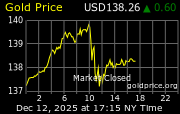Michael Jackson died without his nose on! These are the last ever photos of the late Michael Jackson before he was declare dead as he was brought to the hospital. Jackson was officially pronounced dead at the emergency room at the UCLA Medical Center, and there were no signs of foul play or external trauma to his body. Jackson's body was then flown in a Sheriff's Department helicopter from UCLA Medical Center to downtown Los Angeles for examination by the Los Angeles County Coroner's Office. Michael Jackson was rushed to the hospital on Thursday, June 25, implying the pop star was perhaps still alive at that point, EMT workrs are claiming he was not. The medics wanted to pronounce him dead on the scene but Michael's personal doctor refused to let them. Click on pictures to enlarge.









------------------------------------------------------
Michael Joseph Jackson (August 29, 1958 – June 25, 2009) was an American recording artist, entertainer, and businessman. The seventh child of the Jackson family, he debuted on the professional music scene at the age of 11 as a member of The Jackson 5 and began a solo career in 1971 while still a member of the group. Referred to as the "King of Pop" in subsequent years, five of his solo studio albums are among the world's best-selling records: Off the Wall (1979), Thriller (1982), Bad (1987), Dangerous (1991) and HIStory (1995).
In the early 1980s, he became a dominant figure in popular music and the first African-American entertainer to amass a strong crossover following on MTV. The popularity of his music videos airing on MTV, such as "Beat It", "Billie Jean" and Thriller—credited for transforming the music video into an art form and a promotional tool—helped bring the relatively new channel to fame. Videos such as "Black or White" and "Scream" made Jackson an enduring staple on MTV in the 1990s. With stage performances and music videos, Jackson popularized a number of physically complicated dance techniques, such as the robot and the moonwalk. His distinctive musical sound and vocal style influenced many hip hop, pop and contemporary R&B artists.
One of the few artists to have been inducted into the Rock and Roll Hall of Fame twice, his other achievements include multiple Guinness World Records—including one for "Most Successful Entertainer of All Time"—13 Grammy Awards, 13 number one singles in his solo career—more than any other male artist in the Hot 100 era—and the sales of over 750 million albums worldwide. Cited as one of the world's most famous men, Jackson's highly publicized personal life, coupled with his successful career, made him a part of popular culture for almost four decades.






